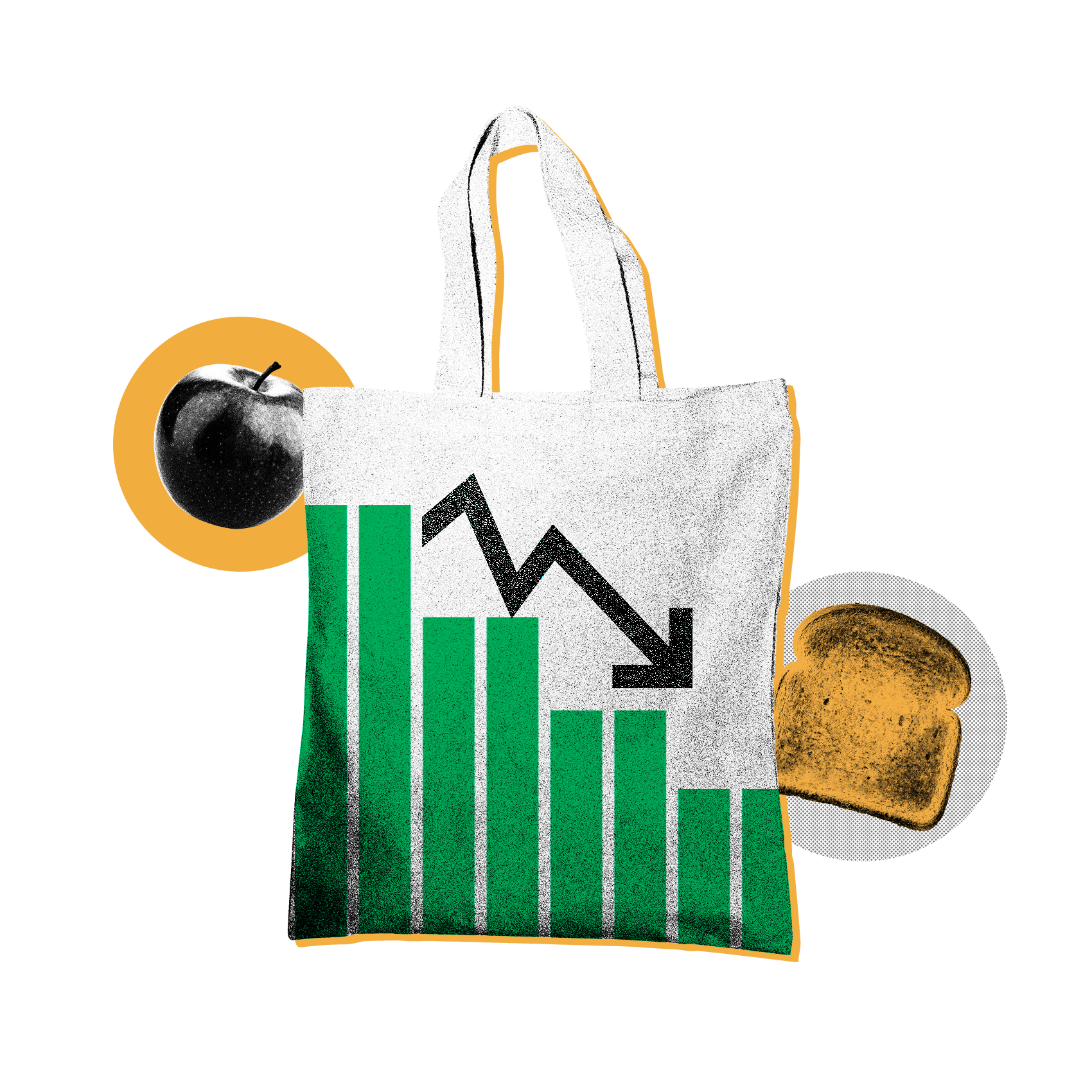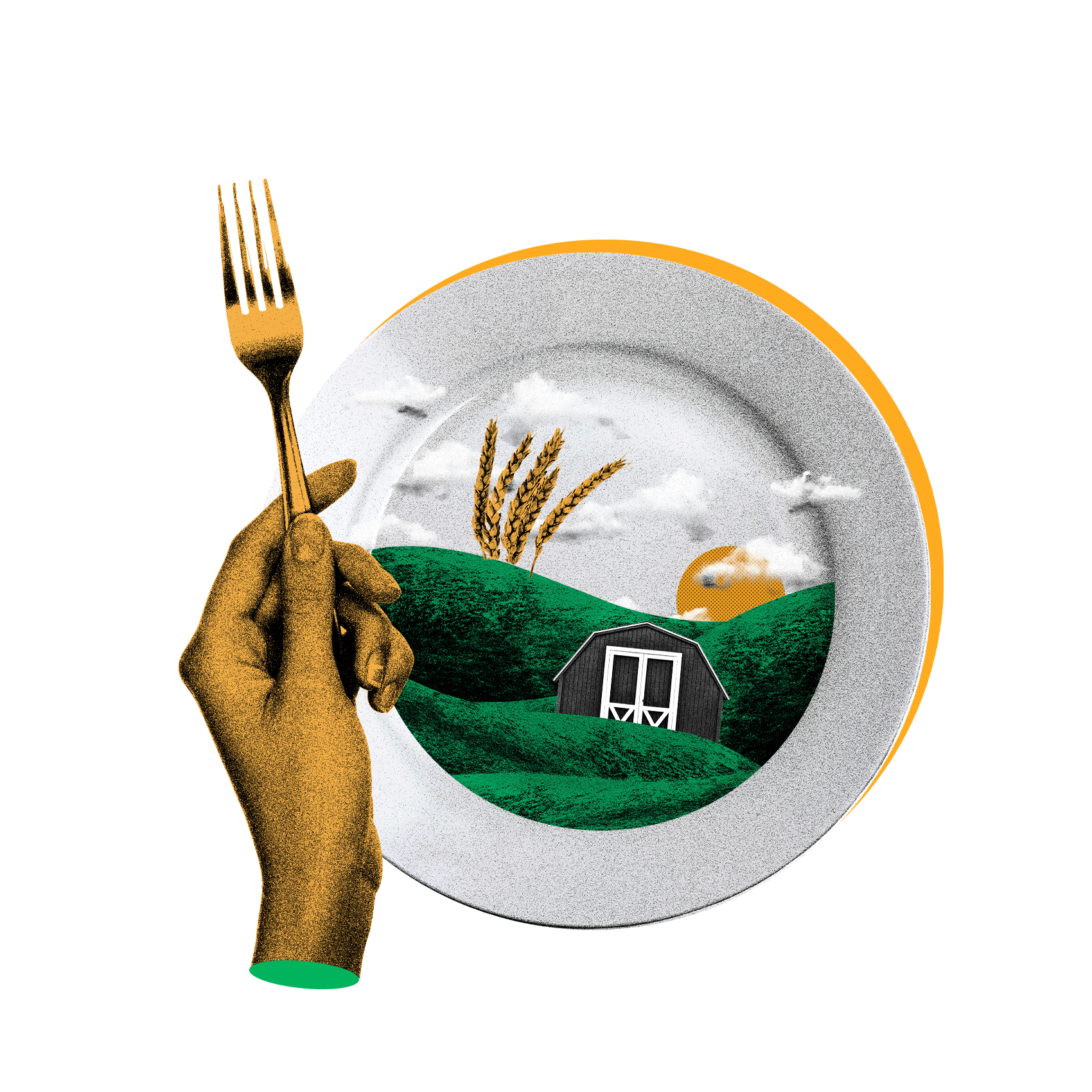
Your guide to climate action: Food
Understanding the impact of our food system on the planet is both an area for awareness and an important opportunity for mitigating climate change. Today, our food systems generate one-third of global greenhouse gas emissions, higher than the global aviation sector. Feeding around 8 billion people and meeting the dietary needs from individuals in developed and developing countries leads to loss in biodiversity on land and water via deforestation, overfishing, and ecosystem degradation, among others. Water and energy usage and food waste are also topics of consideration on how our food system contributes to climate change.
Reducing the global average annual individual carbon footprint from 6.3 tons in 2020 to 2.1 tons in 2030, as recommended by experts, will no doubt involve changes to our food system and diet. Having greater awareness and making small changes will not only help us reduce greenhouse gas emissions and individual carbon footprint but will improve air quality, health, and save money.
Eat more plant-based foods
Animal-based diets have a high impact on our planet. Population growth and an increasing demand for meat and dairy results in the need to clear land and deforestation in order to make room for animal farms and growing animal feed. This results in loss of biodiversity, greater strain on resources like water and energy, among other adverse impacts. In the case of ruminant livestock such as cows and sheep, methane production, a greenhouse gas that is more potent than carbon dioxide, exacerbates the problem. The issue extends to seafood where overfishing and degradation of our oceans from industrial activity and pollution put the future of our ocean at jeopardy.
Switching to a plant-based diet can reduce an individual’s annual carbon footprint by up to 2.1 tons with a vegan diet or up to 1.5 tons for vegetarians. While switching completely overnight is difficult, easing into a plant-based diet by eating more vegetables for a particular meal(ex. lunch) or day of the week can be a great way to get started. Recruiting family, friends, and colleagues to make the transition more fun and social can also be an effective way to transition. With the availability of meat substitutions, vegan chefs and bloggers and the plant-based movement, eating more plants is becoming easier and more widespread with the additional benefits of better health and saving money!
Have you asked your favourite restaurant(s) about plant-based options? Do you have friends, family, colleagues, that have expressed interest in eating less meat? Is there a vegan recipe blogger that resonates with you? Do you know a recipe for a plant-based version of your favorite meat dish?
(Level of effort: medium/high)

Throw away less food
Both individuals and businesses contribute to global food waste. Whether it’s throwing away the food we make or buying groceries we don’t end up using, food waste results in unnecessary use of resources like land, water, and energy, and also results in unnecessary greenhouse gas emissions from production and landfill. Food waste extends not only to the food that we don’t eat or throw away, it also encompasses eating more than is necessary.
By eating only what we need and reducing food waste, an individual can reduce their carbon footprint by up to 1.3 tons annually. Not only will we lower emissions by reducing food waste, we’ll also be healthier, save money, and protect our precious resources for future generations to come.
What type of foods or groceries do you tend to throw away? Is there often food left over when you eat out at restaurants?(Level of effort: medium)

Shop local and organic
Food miles (how far our food travels) and fertilizer use are important topics to consider when it comes to the impact of our food system on the planet. When it comes to food miles, the longer the distance our food travels from the farm to the place where we purchase food, the higher the greenhouse gas emissions from transport vehicles. Shopping and eating local can help reduce the food miles travelled and can help an individual save up to 1.1 tons of carbon emissions annually. Eating what’s in season can also help reduce food miles because out of season foods are often transported from farms that are further away or in a different country altogether, resulting in additional food miles to get to our stores. Eating organic also reduces the need for fertilizers which often result in nitrous oxide emissions, a highly potent greenhouse gas that is more detrimental than carbon dioxide and methane. Organic farming often includes regenerative agriculture techniques which not only reduce emissions but also improve soil health and increase the amount of nutrients in our food, among many other benefits. Eating organic can reduce our individual carbon footprint by up to 0.9 tons annually!
What foods are currently in season where you live? Do you have access to a shop or farmers market with food from local growers? Does your local grocery store sell organic produce?
(Level of effort: low/medium)

Start composting
Composting can be a simple yet impactful action to help reduce emissions from our food system. When we throw our food waste in the garbage, the food waste will typically travel more miles because landfills are further away from our neighbourhoods, resulting in higher transport emissions. Additionally, food waste in landfills are buried in conditions with no oxygen. When food decomposes in these conditions, methane, a greenhouse gas that is more potent than carbon dioxide, is produced as a byproduct. Composting on the other hand often results in fewer transport emissions because compost stations are closer to our neighbourhoods. Additionally, the process of composting involves turning the soil and food waste which ensures that oxygen is present in the process of decomposition. As a result, carbon dioxide is produced instead of methane which is better for the planet. Lastly, compost becomes nutrition-dense soil that can then be used for farming or planting which adds back precious nutrients into the soil and resulting food.
Where is the nearest compost station? Does your city or district offer compost pick-up? Does your workplace or favourite restaurants compost?
(Level of effort: medium/high)

